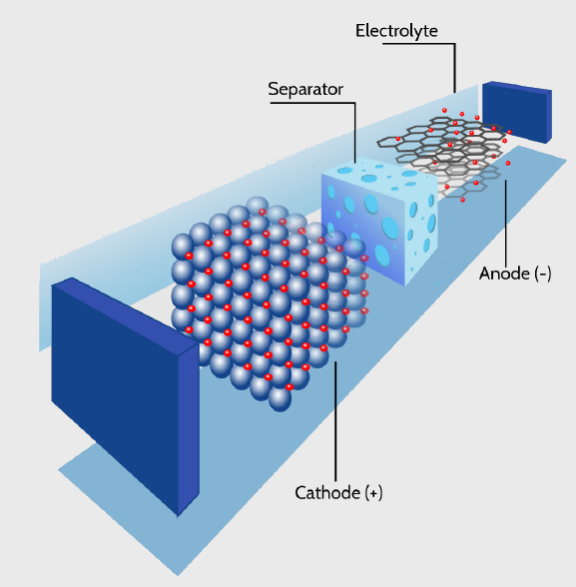Cathode and Anode Materials: While Nickel-Metal Hydride (Ni-MH) batteries were initially popular in the 1990s, the world's first commercial lithium-ion rechargeable battery product was released in 1991 by Sony Corporation. In addition to the high energy content by mass and volume, the battery also exhibits excellent low-temperature characteristics, load characteristics, and cycling characteristics. As a result, it quickly occupied the market and became an indispensable power source for portable devices such as audio-visual equipment, personal computers, and mobile phones.
Today's advanced battery technology begins with the discovery of the high ionic conductivity of solid-phase NaAl 11 O 17 by Kummer and colleagues in the Ford Motor Company laboratory, known as sodium β-alumina [1. Olof Ramsrtomström, Nobel Laureate in Chemistry, 2019 2. YFY Yao and JT Kummer, J. Inorg. nuclear. Chemistry 29, 2453 (1967)].
This has led to the realization that ion transport in solids can actually be very fast, and may lead to various new technologies. Shortly thereafter, Ford researchers showed that an entirely new type of battery could be fabricated using a highly conductive solid electrolyte, using molten sodium for the negative electrode and a molten solution of sodium in sulfur for the positive electrode, which conducts electricity [N. solid electrolyte between N. ] Weber and JT Kummer, Proc. Annual Power Conference. 21, 37 (1967)].
As expected, the possibility of a lithium-like system was quickly considered, as it was recognized that otherwise equivalent lithium batteries should produce higher voltages than sodium batteries. In addition, lithium is lighter in weight than sodium, which is another advantage.
Elemental lithium cannot be used because of its low melting point. Instead, solid lithium alloys, mainly Li/Si and Li/Al systems have been studied [RA Huggins, J. Power Sources 81–82, 13 (1999)].
A number of materials were investigated as cathode reactants at that time, with the most attention being the use of FeS or FeS 2 . Upon reaction with lithium, these materials undergo a remodeling reaction whereby the initial phase disappears and a new phase is formed [DR Vissers, Z. Tomczuk and RK Steunenberg, J. Electrochem. society. 121, 665 (1974)].

Lithium-ion battery is an advanced battery technology, mainly composed of four parts: positive electrode, negative electrode, separator and electrolyte.
From raw material precursor fabrication to final cell production, Micromeritics has a wide range of instrumentation available for every stage of cell production.
In the future, solid electrolytes may replace liquid electrolytes to improve battery safety and performance.
